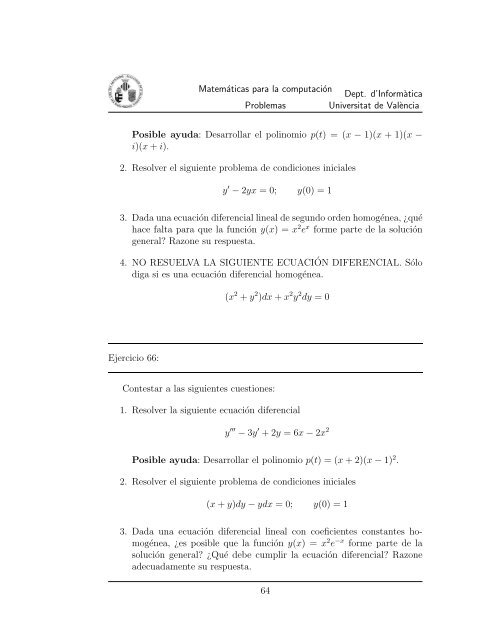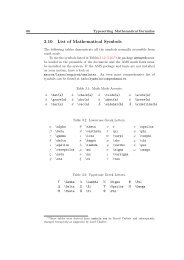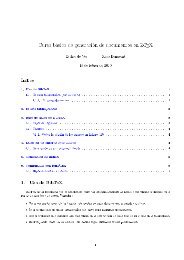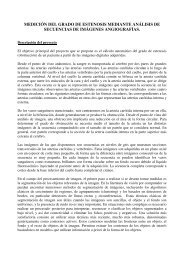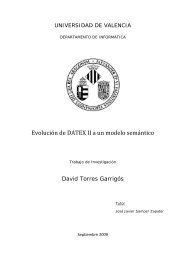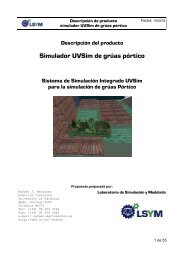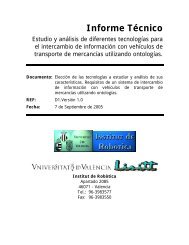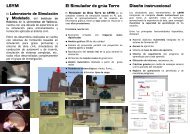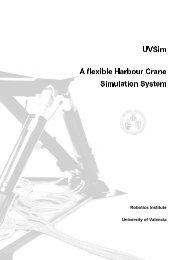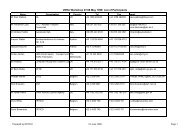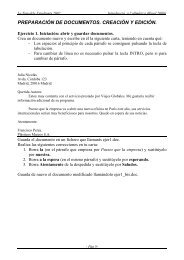Matemáticas para la Computación
Matemáticas para la Computación
Matemáticas para la Computación
You also want an ePaper? Increase the reach of your titles
YUMPU automatically turns print PDFs into web optimized ePapers that Google loves.
<strong>Matemáticas</strong> <strong>para</strong> <strong>la</strong> computaciónDept. d’InformàticaProblemas Universitat de ValènciaPosible ayuda: Desarrol<strong>la</strong>r el polinomio p(t) = (x − 1)(x + 1)(x −i)(x + i).2. Resolver el siguiente problema de condiciones inicialesy ′ − 2yx = 0; y(0) = 13. Dada una ecuación diferencial lineal de segundo orden homogénea, ¿quéhace falta <strong>para</strong> que <strong>la</strong> función y(x) = x 2 e x forme parte de <strong>la</strong> solucióngeneral? Razone su respuesta.4. NO RESUELVA LA SIGUIENTE ECUACIÓN DIFERENCIAL. Sólodiga si es una ecuación diferencial homogénea.(x 2 + y 2 )dx + x 2 y 2 dy = 0Ejercicio 66:Contestar a <strong>la</strong>s siguientes cuestiones:1. Resolver <strong>la</strong> siguiente ecuación diferencialy ′′′ − 3y ′ + 2y = 6x − 2x 2Posible ayuda: Desarrol<strong>la</strong>r el polinomio p(t) = (x + 2)(x − 1) 2 .2. Resolver el siguiente problema de condiciones iniciales(x + y)dy − ydx = 0; y(0) = 13. Dada una ecuación diferencial lineal con coeficientes constantes homogénea,¿es posible que <strong>la</strong> función y(x) = x 2 e −x forme parte de <strong>la</strong>solución general? ¿Qué debe cumplir <strong>la</strong> ecuación diferencial? Razoneadecuadamente su respuesta.64


